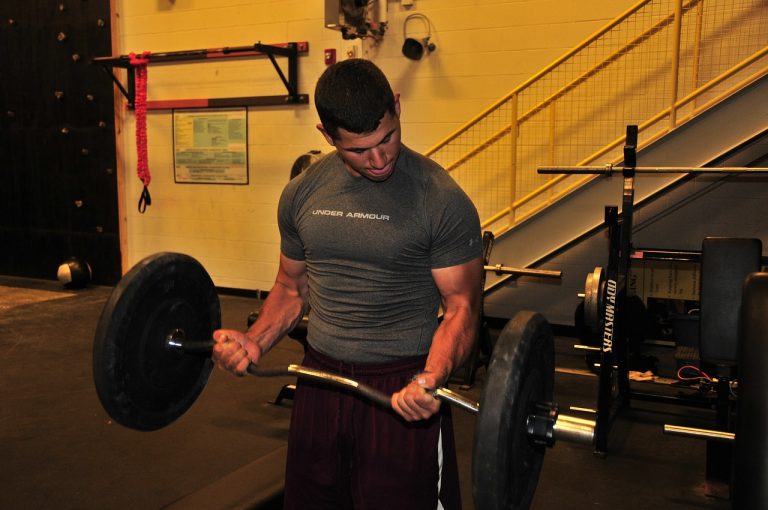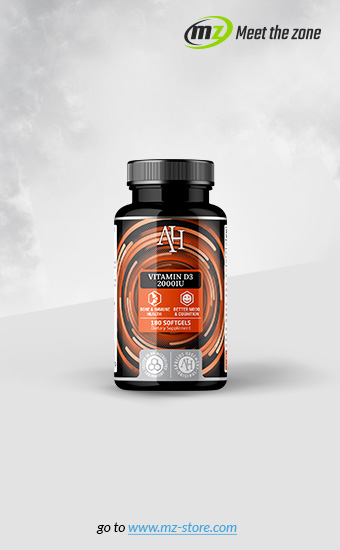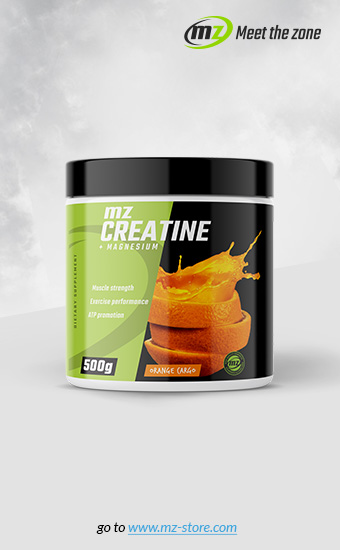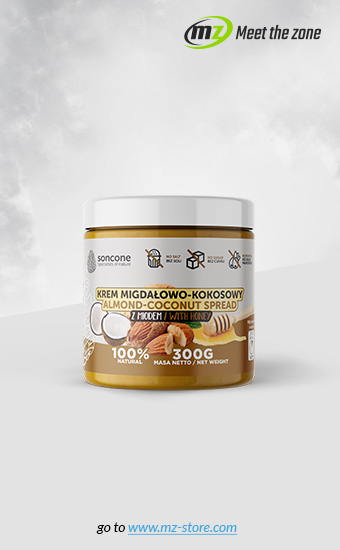Step I
The very first and basic step in composing any diet is calculating our caloric needs. At the moment of such a calculation we take the first step on the way of being a master of our weight. The formula that is provided below is one of the best mathematic ways of calculating daily caloric needs.
Men:
1. we multiply our weight by 24 hours = basic metabolic rate (BMR)
2. BMR x activity coefficient = daily caloric needs
Women:
1. we multiply our weight by 24 hours = basic metabolic rate (BMR)
2. BMR x 0.9 = amended BMR for women
3. amended BMR x activity coefficient = daily caloric needs.
The activity coefficient: very active = 1.4 – 1.5 (daily intensive exercise + physical work during most of the day), active = 1.3 – 1.4 (intensive training every day + standing work), averagely active = 1.1 – 1.2 (training 3 times a week + sedentary work), low activity = 1 (lack of exercise + sedentary work).
Now we just need to play some mathematics and calculate the above. Just bear in mind that to build body mass we need positive caloric balance. On average it means plus 500 kcal, so when we get our score we should add 500 kcal.
Step II
When we already know our caloric needs, we should divide it into macronutrients:
-
Proteins 1g = 4kcal
-
Carbohydrates 1g = 4 kcal
-
Fats 1g = 9 kcal
I will not mention here the characteristics of each macronutrient, however, an interested person should do some reading on the topic. How should the division of macronutrients look like? This matter is very individual. For the so called “hardgainers” the distribution should be as follows:
Proteins: 1.5 – 1.8g per kilogram of body mass, carbohydrates: up to 6g per kg and fats up to 2g per kg.
You will probably ask why I applied such a distribution and not for example 3-4g of protein per body mass kilogram, since you heard that proteins build our body mass. However, this is a myth. Proteins fasten our metabolism and are the most thermogenic from all of the macronutrients (they are conducive to losing weight) and their surplus is eliminated from the organism. At the same time, however, it burdens the liver and kidneys what may lead to anemia. Apart from this, in the amount of more than 2,5 g per kg they constitute an energy source that is simply uneconomical. We also should not exaggerate with the amount of carbohydrates, as they cause the increase of insulin (directed increase is positive, but the surplus is not) and most importantly, carbohydrates do not save muscle proteins, as commonly believed. Next in turn are fats (healthy fats) which constitute a great energy source. EFAs (essential fatty acids) are a vital factor influencing regeneration, health and muscle mass growth, so there should be the appropriate quantity of fat in our diet.
And how should the distribution of macronutrients for non-hardgainers look like? Here we can apply a bigger amount of proteins and lower fats.
Proteins – 1.5 to 2.2 g, carbohydrates – up to 5-6 g and fats – up to 1.5 g.
Bear in mind that insulin is both our best ally and worst enemy. The time will show you how to control it.
Since we already know how much we should eat and how to distribute macronutrients, we can now move to the issue of what to eat.
Step III
We need to know what contains proteins, fats and what food is the main source of carbohydrates as well as what products should be avoided.
What we eat:
Fish (the best from north seas), eggs (whole or whites), poultry (especially chicken and turkey breasts), beef, soya (from time to time it will not hurt and out diet should be varied), lean dairy, protein powder, veal, game, lean ham of good quality.
What should be avoided:
Pork, offal, cheap hams, preserves etc.
What we eat:
Vegetables, fruit, oats, brown rice, buckwheat groats, barley groats, honey, puffed rice, vitargo, whole wheat bread.
What should be avoided:
Sugared yogurts, sweets, baked goods, sugared jams, white bread, rolls, sugared cream cheeses, table sugar.
What we eat:
Cod-liver oil, linseed oil, linseed, egg yolks, avocado, oily fish, omega-3.
What should be avoided:
Saturated animal fats, trans-fatty acids (margarines), foods fried for too long, refined oils.

Since we already know what and how much to eat, we should just start working and get down to training. This was the theoretical part.
Now we will focus on the practical part. Our model person will be Eddy. Eddy is 178 cm tall and weighs 70 kg and big muscle mass is something that he dreams about every night. Eddy trains very hard at the gym, but has no idea about nutrition. One day, Eddy realizes that his effects are not very impressive and decides to search the Web to find the some answers. What is a muscle mass diet? Who can compose it for me? Eddy comes across our best-in-the-world forum and sees this article. He starts to think, calculate, gather some knowledge. He starts from the first step – calorie calculations.
Eddy is in middle school. Apart from training and studying and pretending to help in houseworks he does nothing, so he needs to check his activity coefficient and calculate caloric needs.
70 x 24 = 1680 – this is his BMR
Eddy is averagely active, but trains 4 times a week and is a hardgainer, so he multiplies his BMR by 1.4 = 2352. He read that his caloric balance has to be positive, so he adds 500 kcal to his needs.
2342 + 500 = 2842, what he rounds out to 2900 kcal (for an even calculation)
Eddy already knows that he has just made the first step in his fight for bigger muscle mass. Now, he distributes macronutrients as for a hardgainer:
1,5g of proteins x 70kg = 105g which gives us 420 kcal. 1,8g of fat multiplied by 70 = 126g of fat which amounts to 1134 kcal. Now, 420 + 1134 = 1554, so from his pool of 2900 kcal he needs to subtract 1554 which gives him 1346 kcal (this is how much carbohydrates he has to eat). Therefore, 1346/4 = 336,5g of carbohydrates. It means around 4,8g per each body mass kilogram.
Eddy has taken the second step, so now he only needs to choose the appropriate products and divide them into 3 to 6 meals. Eddy’s choices are governed by his likes and dislikes and by what is appropriate for a beginner bodybuilder.
Breakfast at home
Kefir, rolled oats, linseed, a bit of raisins, walnuts, a hint of curd cheese.
Eddy mixes all the ingredients and pours with kefir. He has a delicious and nutritious breakfast.
Comment: Breakfast is our most important meal (not counting a post-workout meal) and it consists of full proteins, complex carbohydrates (oats) and healthy fats (linseed and walnuts). Breakfast should be eaten immediately after waking up.
Lunch (at school)
Whole wheat bread, turkey breast ham, apple, banana.
A good and delicious meal. Eddy prefers such a meal, as he feels ashamed of taking special lunchboxes to school with meat, groats and vegetables poured with olive oil.
Comment: the insulin level has raised, now we eat only complex carbohydrates and full protein. Complex carbohydrates stabilize sugar level and ensure it is appropriate.
Dinner
Chicken breasts, buckwheat groats, vegetables, a lot of olive oil.
Eddy ate a tasty and nutritious meal, he feels full of energy and after 2 hour rest he gets down to the training.
Immediately after the training he drink Vitargo with water. It is tasty and the proper amount of carbohydrates is easily absorbed.
Comment: after the training glycogen has to be immediately refilled and Vitargo is great for this. Remember, the fight with after-training muscle catabolism has just started and first we need to refill glycogen in our muscles so that they are not consumed by our organism.
Up to 45 minutes after training
Chicken breasts with white rice
Eddy after eating this meal rests as he still feels the effects of a tough training.
Supper
Mackerel with avocado, couscous, and vegetable salad
Comment: now we provide fewer carbohydrates, healthy fat and full protein to help muscle recovery and provide microelements.
For the night
Tuna with olive oil.
Eddy feels that in the morning he may be hungry, so he eats the tuna and pours with olive oil.
Comment: post-absorption catabolism is our worst enemy, so proteins and fats that slow the absorption of proteins are the best choice so that our organism does not eat its own muscles.
This is it. Remember that this is just an example and its aim is to picture the particular steps in diet composition.






